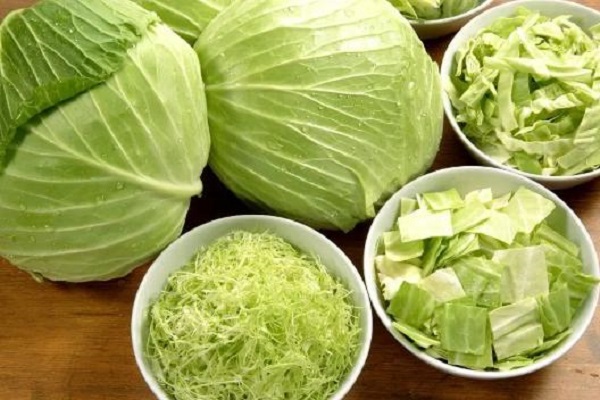Curious about whether your furry friend Can Dogs Eat Cabbage? In the quest to understand what’s safe for our canine companions, cabbage emerges as a potential option. This cruciferous vegetable, known for its affordability and nutritional richness, poses no harm to dogs when consumed in moderation. However, to ensure your pup’s well-being, it’s essential to follow specific guidelines regarding safe consumption and appropriate portions. Let’s delve into the details of whether dogs can eat cabbage and how much is suitable for them.

Can Dogs Eat Cabbage?
A dog’s diet may benefit from include cabbage because of its high nutritional content. Brimming with nutrients that are beneficial to dogs, cabbage offers vitamins and minerals that support the general health of canines. But it’s important to practice moderation since overindulging may have comparable consequences to those seen in people, including upset stomach, flatulence, and diarrhea. It’s important to include cabbage in moderation as part of a balanced diet for your pet’s health. If you have any worries about your dog’s food choices, always keep an eye on how they are responding to new meals and get advice from a veterinarian.
The health benefits of cabbage for dogs
Dogs may benefit much from cabbage, therefore adding it to their diet is a good idea. Filled in important minerals like manganese, copper, and potassium, as well as vitamins K, C, B6, and B1, cabbage is good for your dog’s general health. Numerous physiological processes, such as the immune system, bone health, and energy metabolism, are supported by these nutrients.
Moreover, cabbage is rich in antioxidants, especially polyphenols, which support the body’s defense against free radicals. These antioxidants support canine cardiovascular function and help prevent illness by lowering oxidative stress. Furthermore, red cabbage’s ability to combat cancer provides an extra line of defense against a number of illnesses.
Dogs’ gastrointestinal systems and digestion are supported by the fiber in cabbage. This may encourage regular bowel motions and ease digestive problems including constipation. Additionally, dogs with a healthy digestive system have better skin and hair, which lowers their risk of skin irritations and encourages a glossy, lustrous coat.
Even though dogs’ diets are predominantly meat-based, adding cabbage to meals or snacks on occasion may provide important nutrients and diversity to their diets. To make sure your dog tolerates cabbage properly, it’s crucial to add it to their diet gradually and to keep an eye on how they react. It is advised to speak with your veterinarian before making any dietary changes for your dog in order to identify the right portion amounts and to discuss any unique dietary needs.
Which Kinds of Cabbage Is Safe for My Dog to Eat?
When it comes to cabbage types, dogs may safely eat both red and green cabbage as long as they are fed in moderation. But it’s important to take into account your dog’s specific dietary requirements as well as any possible sensitivities. It is highly advised that you speak with your veterinarian before introducing cabbage to your dog’s food to make sure it is in line with their nutritional needs and general health.
Can raw cabbage be fed to dogs?

Yes, raw cabbage can be fed to dogs. It’s generally safe for canine consumption. However, due to the large size of cabbage leaves, it’s advisable to cut them into smaller, bite-size pieces to make it easier for dogs to chew and digest. Additionally, raw cabbage is low in calories, which makes it suitable for overweight and diabetic dogs. Nevertheless, as with any new food introduction, it’s wise to monitor your dog for any adverse reactions and consult with your veterinarian regarding appropriate portion sizes and dietary considerations.
How to cook cabbage for your canine friend
There are a few easy rules to follow while preparing cabbage for your dog companion in order to make sure it’s safe and tasty for them.
- Wash Thoroughly: Give the cabbage a good wash to get rid of any possible pesticides or dirt on the leaves before cooking.
- Remove stiff Stems: Your dog may find it difficult to chew and digest the cabbage’s stiff stems and core. Therefore, trim off these sections.
- Cut into Bite-Sized Pieces: Use a knife to thinly slice or chop the cabbage. This lessens the chance of choking and makes it simpler for your dog to manage.
- Cook Plain: Don’t use any condiments, oils, or spices while preparing cabbage for your dog. Due to their delicate stomachs, dogs may experience digestive system upsets from some substances.
- Cooking Techniques: There are a few different methods to prepare cabbage, such as boiling, steaming, or microwaving. Boiling is a popular technique since it makes the cabbage softer and easier for dogs to eat.
- Prevent Overcooking: Overcooking cabbage may cause it to lose its nutrients. Take caution while doing so. Cook the cabbage until it’s soft but still has a little crunch to it.
- Chill Before Serving: Before giving your dog any cooked cabbage, let it come to room temperature. Foods that are too hot might burn your dog’s mouth and hurt them.
- Track Reaction: Gradually add cooked cabbage to your dog’s diet and see how they respond. Don’t give cabbage if you see any symptoms of an allergic reaction or upset stomach, and see your vet.
Be careful when feeding your dog cabbage
It’s important to use care while giving your dog cabbage in order to protect their health. Like with people, dogs that consume too much of this leafy green vegetable may experience gas, upset stomach, and flatulence. Even though cabbage has health advantages, moderation is crucial, and you should always speak with your veterinarian before giving your dog any additional “people food” or adding cabbage to its diet.
It is best to introduce cabbage to your dog gradually and in tiny doses so that you can watch over the next 24 hours for any negative responses, such changes in the consistency of their stools. Furthermore, hypothyroidism development is a potentially dangerous concern linked to excessive cabbage eating, however this usually needs extended consumption of raw cabbage. If you want to reduce this danger, you could think about fully heating the cabbage by steaming or boiling it, as this will eliminate any components that can affect the thyroid gland.
Whichever kind of cabbage you choose—purple, Napa, Savoy, red, or any other kind—it is imperative that you use a simple, unseasoned recipe. It is ensured that the cabbage has its natural flavor and is dog-friendly by avoiding condiments, spices, and additions. You may provide your dog with a nutritious and healthy supplement to their diet by handling the feeding of cabbage with caution and attention.
Conclusion
While dogs can safely enjoy cabbage as part of their diet, it’s essential to adhere to guidelines for safe consumption and portions. Cabbage offers valuable nutrients and can be a healthy addition to your dog’s meals when served in moderation and prepared appropriately. Consulting with your veterinarian and introducing cabbage gradually will help ensure your dog’s well-being and enjoyment of this nutritious vegetable. Remember, responsible feeding practices are key to maintaining your dog’s optimal health and happiness.
